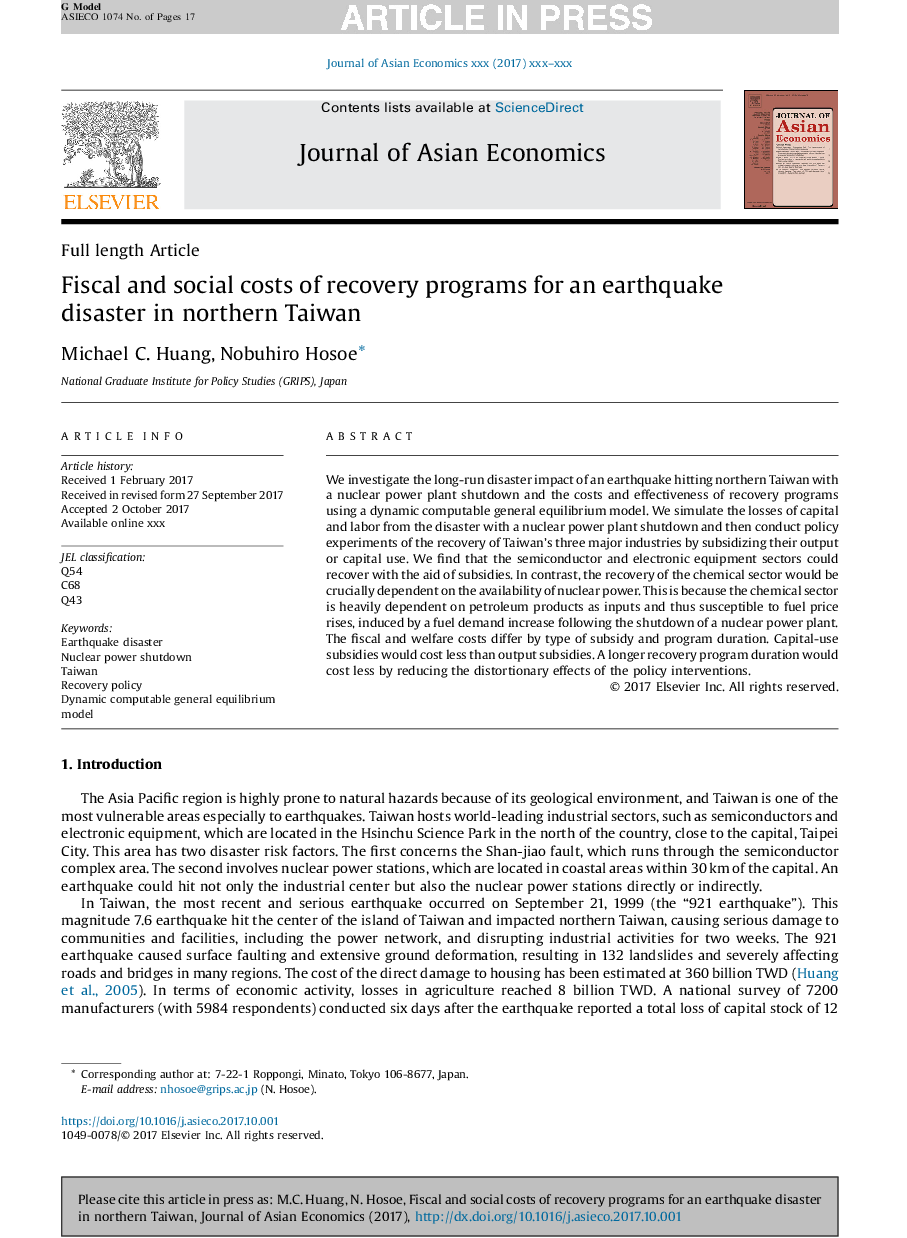ترجمه فارسی عنوان مقاله
هزینه های مالی و اجتماعی برنامه های بهبود برای یک فاجعه زلزله در شمال تایوان
عنوان انگلیسی
Fiscal and social costs of recovery programs for an earthquake disaster in northern Taiwan
| کد مقاله | سال انتشار | تعداد صفحات مقاله انگلیسی |
|---|---|---|
| 101021 | 2017 | 17 صفحه PDF |
منبع

Publisher : Elsevier - Science Direct (الزویر - ساینس دایرکت)
Journal : Journal of Asian Economics, Volume 53, December 2017, Pages 1-17
ترجمه چکیده
ما بررسی تاثیرات فاجعه طولانی مدت یک زلزله در شمال تایوان با خاموش شدن نیروگاه هسته ای و هزینه ها و اثربخشی برنامه های بازیابی با استفاده از یک مدل تعادل عمومی قابل محاسبه را بررسی می کنیم. ما شبیه سازی تلفات سرمایه و نیروی کار را از فاجعه با خاموش شدن نیروگاه هسته ای شبیه سازی می کنیم و سپس آزمایش های سیاست گذاری از بهبود سه صنعت اصلی تایوان را به وسیله یارانه ی تولید یا استفاده از سرمایه آنها انجام می دهیم. ما دریافتیم که بخش های نیمه هادی و تجهیزات الکترونیکی می توانند با کمک یارانه ها بهبود یابند. در مقابل، بازیابی بخش شیمیایی به شدت وابسته به دسترسی به انرژی هسته ای خواهد بود. این به این دلیل است که بخش شیمیایی به شدت وابسته به فرآورده های نفتی به عنوان ورودی و در نتیجه حساس به افزایش قیمت سوخت، ناشی از افزایش تقاضای سوخت پس از خاموش شدن نیروگاه هسته ای است. هزینه های مالی و رفاهی بر حسب نوع یارانه و مدت زمان برنامه متفاوت است. یارانه های استفاده از سرمایه ی هزینه کمتر از یارانه های تولیدی خواهد بود. یک دوره طولانی تر برنامه بهبودی با کاهش اثرات تحریف کننده مداخلات سیاست هزینه می کند.

